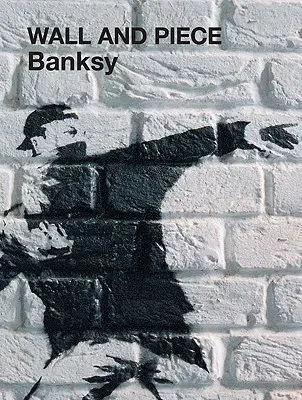
Let’s delve into a summary of “Wall and Piece” by Banksy, the anonymous English graffiti artist known for his thought-provoking street art.
Introduction
“Wall and Piece” is an autobiographical art-exhibit book that unveils the journey of Banksy—the elusive artist who has left his mark on walls across cities worldwide. Born in Bristol, Banksy’s identity remains shrouded in mystery, even as his influence grows. The book is divided into six thematic sections: Monkeys, Cops, Rats, Cows, Art, and Street Furniture.
Main Characters
While “Wall and Piece” doesn’t feature traditional characters, the central figure is Banksy himself. His motivation lies in challenging conventions, questioning authority, and using art as a powerful tool for social commentary. Banksy’s anonymity becomes a character in its own right, allowing him to operate freely in the underground world of street art.
Plot
The book’s conflict centers around the clash between artistic expression and societal norms. Banksy’s stenciled art projects serve as both visual storytelling and personal anecdotes. In the Monkeys section, he recounts an epiphany he had at eighteen—a moment when he realized he needed to break away from copying others and find his original voice. The tension lies in balancing rebellion with anonymity, as Banksy continues to create provocative pieces while evading capture.
Setting
“Wall and Piece” transcends a specific time or place. Its canvas is the urban landscape, where dilapidated walls, bridges, and buildings become Banksy’s gallery. The setting influences the characters (including viewers) by challenging their perceptions of art, ownership, and public space. Banksy’s work disrupts the mundane, inviting us to question authority and embrace creativity.
Themes
Several underlying ideas emerge:
- Graffiti as Honesty: Banksy defends graffiti as an honest art form—one that lacks elitism and exhibits on some of the best walls a town has to offer. His stenciled monkeys, rats, and cows become symbols of authenticity, challenging the status quo.
- Satire and Subversion: Through the “Cops” section, Banksy satirizes law enforcement. His art portrays police officers in unexpected, often humorous situations—kissing, urinating, or posing by anarchy signs. It’s a commentary on hypocrisy and power dynamics.
- Originality and Anonymity: Banksy’s refusal to reveal his identity underscores the theme of originality. He remains true to himself by avoiding imitation, even as he infiltrates major museums and decorates walls worldwide.
Conclusion
“Wall and Piece” invites us to see beyond the surface of urban landscapes—to recognize the power of art in unexpected places. Banksy’s legacy lies not only in his iconic images but also in the questions he raises about creativity, rebellion, and the blurred lines between vandalism and artistic expression.
Feel free to explore the book further—it’s a captivating journey into the mind of an artist who defies convention!

